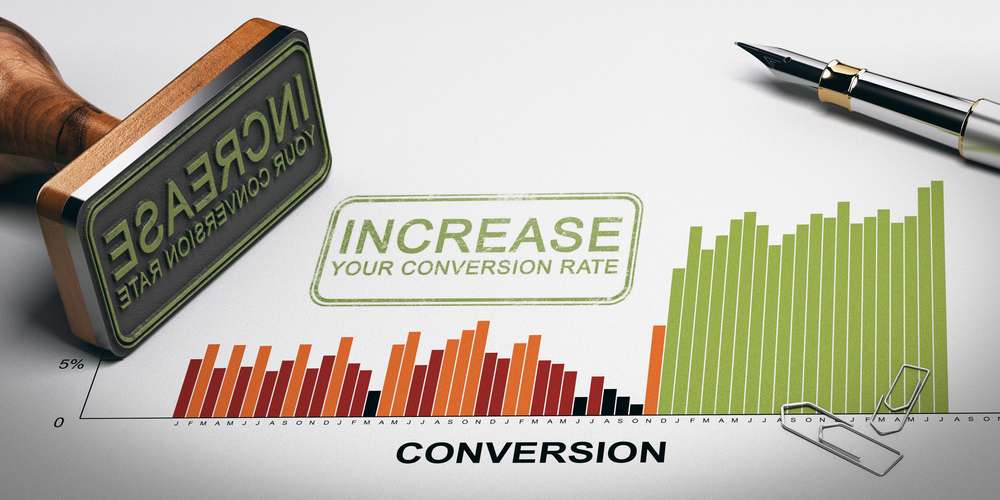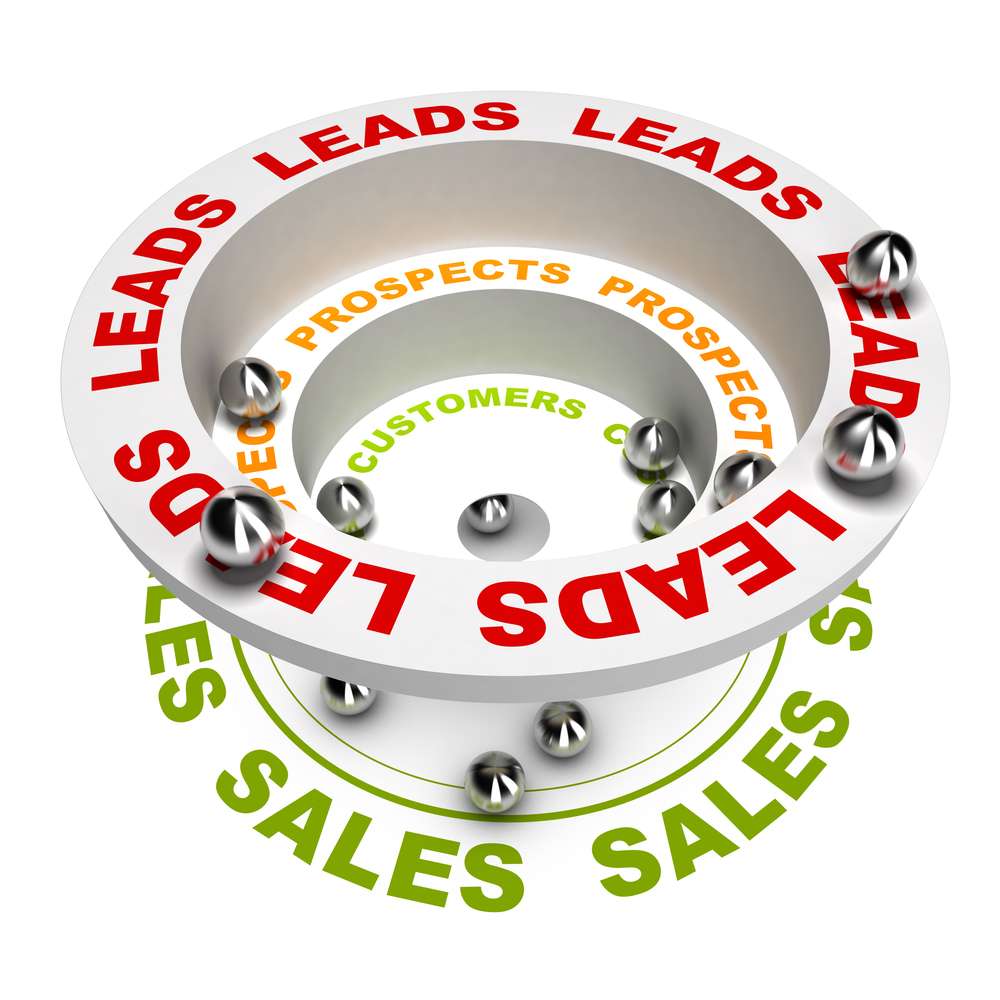
Conversion Rate Optimisation
This information is designed to give you insight into what conversion rate optimisation is, how to apply them to your business, and just how imperative it is to track them. In fact, it can affect your entire marketing program, from start to finish.
Not tracking could be affecting your financial position, team morale, and more.
When you have these conversion rates, you can then work to improve them, increasing sales to boot!
Why Track Conversions?
Most business owners look to increase their businesses by finding new leads. Most focus on generating more and more inquiries.
Amazingly though, most wouldn’t have a clue how many of their current inquiries actually become sales—they simply don’t know whether they’re winning or losing!
That is, they fail to track their conversion rates.
Your conversion rate is the difference between the number of enquiries received and the number of sales made.
This can then be calculated as a percentage.
For reasons that will become apparent, if there’s just one item you take away from this session, it’s this—track your conversion rates.
For most businesses, focusing on generating MORE enquiries will get you nowhere. Instead you need to be doing MORE with the ones you’ve got!
You see, sales opportunities are staring you in the face. As you probably know right now, there’s no doubt you’re losing sales opportunities every day. The question really is…how many? And what could happen to your business and your profits if you could win more?
To find out, you need to develop a system for tracking ‘conversion rates’ and the sales generated for your business.
To get that process started, answer this question:
‘Of the enquiries you receive, what percentage do you think turn into sales?’
Note your answer here: ______%
Interestingly, when most business owners or team members are asked, the majority will say:
“Oh about 75%. Yeah, I think 70, 75%.”
Some would be a little more conservative and suggest “about 50 or 60%.”
When then asked:
‘Is that fact? Do you specifically track that somehow, or is it a guesstimate?’
Most business owners will agree it’s only a guesstimate. If this is true for you, your business could be facing a MONUMENTAL opportunity. An opportunity you couldn’t have asked for!
And that’s because when most business owners actually track their conversion rates, most find it’s often actually as low as 20% or 26%, to a maximum of about 32% or 35%.
It becomes obvious, then, that generating leads is in fact the least of your worries.
It’s clear CONVERTING your existing leads into sales is the greatest opportunity for your business—NOT generating new leads!
Fact is, you’re already generating plenty of leads. You have more than you can convert, so that must be your focus.
This will improve your profitability, too. You see, it costs you perhaps thousands to make your phone ring or have people visit your premises. Every single one of those leads costs you money. Each one that you fail to convert increases the costs of winning those clients that you do. Converting more means you make more on each new customer you win, and your cost per sale decreases proportionately.
Better yet, this is a fantastic opportunity for the business.
Can you double 60%, 75%, or 80%?
Of course not.
So the only way to grow your sales in this case is to generate more enquiries. Enquiries that often cost money through advertising, direct mail, and so on.
On the other hand, you CAN double 20% or 25%.
Right there and then, WITHOUT having to generate any more leads, if the conversion rate could be increased through training, systemisation of the sales process, and a greater customer focus, the business could quite feasibly DOUBLE its sales.
All of which costs virtually nothing! As opposed to chasing more leads (usually an expensive option), you can enjoy this growth within your business for almost no increase in costs or change in staffing numbers.
Making your business that much more profitable.
Further, a conversion rate like this may also indicate that your business may not be operating at full capacity.
Knowing your conversion rate is also critical for planning your marketing.
If you know that you need to sell 10 products or service types and you know your conversion rate is 25%, then you know you have to get in front of 40 potential customers to sell that 10. It certainly takes the mystery out of marketing and lets you control your activities and your sales.
No other process allows you to do this so easily.
Conversion Rate Optimisation Is Easy To Do
You’ll remember, your conversion rate is the number of enquiries received compared to the number of sales made, as a percentage.Conversion rates can be tracked in several ways when performing conversion rate optimisation.
Clearly you must track the number of incoming calls or enquiries and then the number of sales made from there. This could be done on a simple tally sheet or through other systems, such as keeping all proposals or quotes numbered and comparing that to the weekly or monthly sales figures.
These calls or enquiries could then be broken down further into the source of the call. So, in fact, you have a conversion rate tracking system and a marketing tracking system all in one simple process or form.

For example, your sources of business could include:
- Advertising
- Referral
- Drive-by/walk-in
- Phone directory (e.g., Yellow Pages)
- Host-style relationship
- Flyer
- Current client
- Other…
Simply by asking:
“Oh and just before you go, could I ask how you heard about us?”
or
“And, [Enquirer’s Name], how did you hear about us?”
You’ll be able to measure not only your conversion rate but also the source of the Enquiry.
In fact, you could create a table that looks something like the next one. And use this as a tally sheet everyday to track the number of enquiries versus the number of sales. For example, the slashes in the columns represent the number of enquiries from the source. The check marks and x’s represent the total sales made or lost from those enquiries.

This tally sheet could be kept by each person or it could be left beside the cash register. Or you could use a more detailed system, such as numbering quotes and proposals and comparing that to sales numbers. Regardless, it should be easy to track and tracked weekly or monthly, depending on your type of business.
Ideally, you’ll develop this system to then track, very specifically, the conversion rates of each team member for ‘potential client enquiries.’ To do that, each team member could have a separate sheet or initial any enquiries or sales they record. You’d then collate them at the end of every week, for example.
To increase these conversion rates and have your team feel very comfortable with the selling process, either over the phone or face-to-face, you’ll need to develop some scripts, basic points, checklists, and responses to handle those enquiries and potential sales in the best possible way—every time.
It’s also a great idea to put each person’s name on a whiteboard in broad view of every team member, with their conversion (or productivity) rate right next to it. For example:

You see, it’s been shown statistically that conversion rates can increase by up to 16% just by tracking them. That is, without any other change to the sales process, except tracking conversion rates, sales could increase by as much as 16%. Imagine what that could do for your business!
What would a 16% increase for no additional cost mean to your business and your profits?
Interestingly, this happens for several reasons.
Usually, once team members are aware of their conversion rates, they’ll automatically become more conscious of what they’re doing when they’re dealing with a customer. They’ll be more focused on doing a good job and helping the customer.
Also, everybody by nature wants to do well, so if the team members see there’s room for improvement, most will strive to do just that. Many will be surprised by the figures but will be willing to work on it. Not only that, people really do respond to targets—it gives them an impression of the bigger picture.
The team members also know that everybody else knows their conversion rate and will usually (thanks to our healthy egos and competitive natures) improve! You can turn it into some fun with the team by offering incentives, friendly competitions, and so on.
Take It A Step Further
Better yet, you might be able to ask this question:
‘What do we need to do to increase our conversion rate from 25% to 40% or higher?’
Meaning that you could generate, for instance, 16 sales from 40 potential customers. Or, rather than having to see or generate 40 potential inquiries, you would only have to generate and see 25 potentials to sell your target of 10. Either gives you greater leverage for your marketing pound and your investment of time. So you see, you must track your conversion rates.
Sales training is a fantastic way to increase this figure, too. Many people have never been trained to sell, and many others just don’t feel comfortable with it.
Because of this, another great way to increase your results is to systematise the selling process based on the way you or your best salesperson serves potential customers. Usually, you’ll find someone has figured out how to relate to your particular potential customers in the best possible way. A way that gets a solution for the customer and a sale for the business. It’s this ‘way’ that needs to be documented and worked through your business.
To increase your conversion rates, you might also ask: ‘What else do we need to offer the customer?’
By tracking these details, the business as a whole (and future team members) can be supported if it’s having trouble and the team can celebrate wins together when they reach certain sales targets. It also allows each team member and the owner to see the value of their contribution to the business, thus creating pride, a sense of team, and ‘ownership’ of some of the responsibilities.
Also, during the Businesses Getting Results process, any improvements to the conversion rates of enquiry to sale can be tracked clearly. You’ll know whether you’re winning or losing!
